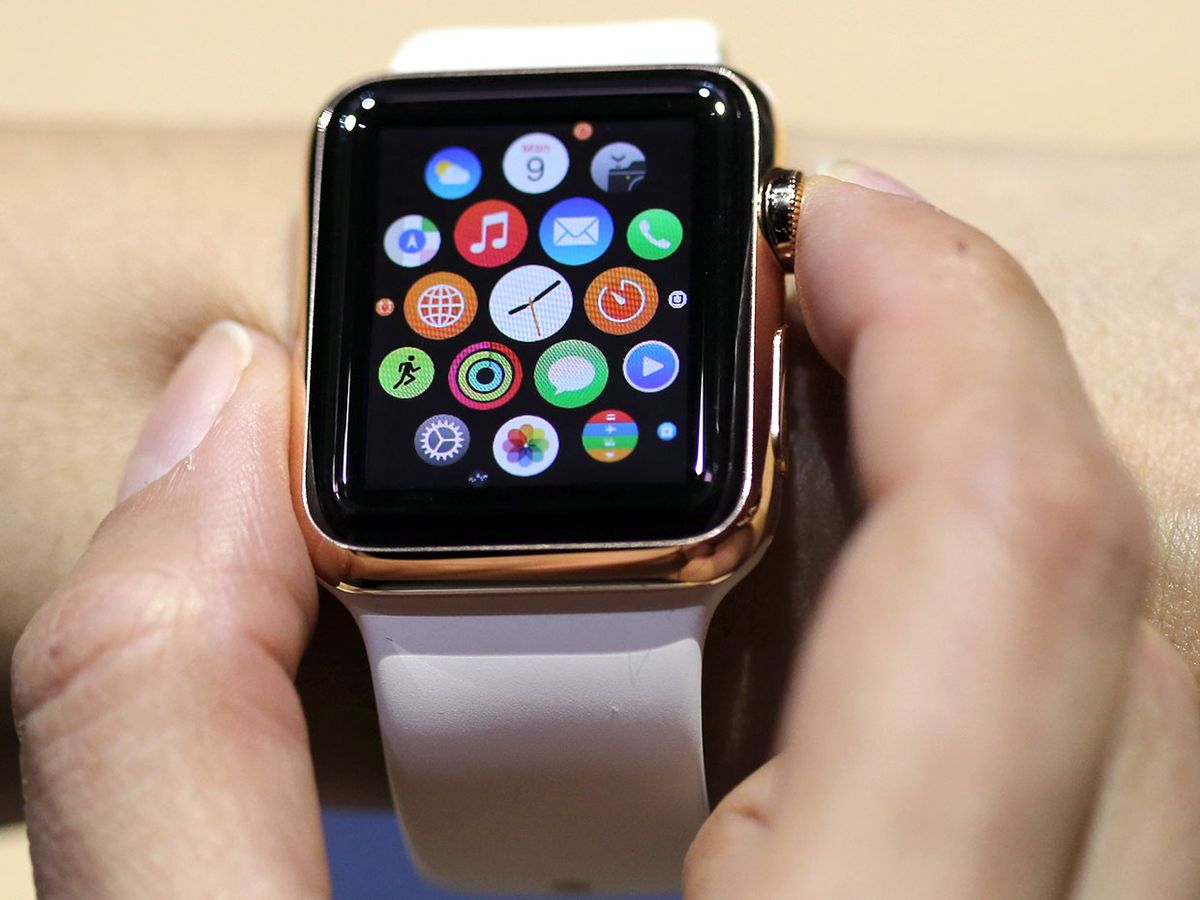The Consumer Electronics Hall of Fame: Apple Watch
The $10,000 gold Apple Watch was an extreme indication of Apple’s ability to command premium prices; too bad the company stopped making updates for that model after three years

The Apple Watch wasn’t by any stretch of the imagination the first smart watch. It’s debatable whether it’s the best smart watch. However, without question it is the best-selling smart watch, with more than 33 million sold as of November 2018. And given its market share as of this writing, it will continue to be the top seller for quite a while yet. The Apple Watch was one of the great examples of a company coming out with the right product for the right market at the right moment. It was a great example of terrific (ahem) timing.
People imagined smart watches decades ago; comic-strip hero Dick Tracy first strapped one on in 1946. Seiko Epson introduced a watch in 1984 that synced with PCs. In the 1990s, Timex, IBM, and Samsung attempted electronic watches with technology that wasn’t quite up to the challenge. Through the 2000s, smart-watch connectivity remained clunky; the apps still inconvenient to use. In 2004, Microsoft introduced a smart watch called the Spot; it relied on a proprietary wireless network operating in the FM band. As the wags noted, Spot was a dog. Motorola, Sony Ericsson, Vyzin Electronics, and others followed.
Late in that decade, Fitbit and others pioneered the market for fitness trackers, which monitored the user’s movement, heart rate, sleep schedule, and other health-related parameters. A combination fitness tracker and smart watch seemed like a logical next step, but the gung-ho folks who liked fitness trackers would reject combo devices for a few more years yet.

In 2012, Pebble Technology Corp. introduced the first successful smart watch, called Pebble. It was followed by the Omate TrueSmart in 2013, and then LG, Razer, Samsung, Sony, and several others started to gain some market traction. Some of these were combo devices and, for whatever reason, people finally began to warm to them.
All along, the challenge facing every smart-watch manufacturer was trying to sell wrist timepieces to a population that had lost the habit of wearing them in favor of referring to their cellphone clocks.
Most smart-watch makers did the obvious—design their watches to act as adjuncts to the phones. You could glance at your watch to see your latest phone message, email, or alarm without having to dig your phone out of pocket or purse.

Apple took that approach, too, when it finally entered the market in 2015, but it put a different spin on it, and the clue was in the name of the product. It wasn’t the Apple Smartwatch or even the Apple iWatch; it was just the Apple Watch. Apple would happily sell into the smart-watch market, sure, but its primary target would be the luxury-watch market, which consisted of people who wanted a device that not only told time but also conveyed status—potential customers of the type who gladly pay a premium for their plush totems.
That strategy was not available to most of Apple’s smart-watch competitors. Where most companies have customers, Apple also has devotees who consider Apple a status purchase. Apple successfully leveraged its reputation as a premium brand into the luxury-timepiece market. In fact, when the watch was introduced, Apple offered a version of it with a solid-gold case for upwards of US $10,000 (and, whoops, three years later Apple stopped making updates available for that model).
Brand fealty only goes so far, however. Even for Apple cultists. Ongoing success had to be based on the Watch’s merits. Apple brought its formidable engineering design prowess to bear on creating a custom electronics package. The result was a sliver of a module it calls a system in package (SiP), which contained almost all the electronics necessary for the watch. The SiP is basically several ICs and connecting circuitry within a single die. The first Apple Watch SiP, designated the S1, incorporated a 520-megahertz 32-bit ARMv7 processor, DRAM (from Elpida Memory, now part of Micron Technology), Near Field Communications technology from NXP Semiconductor and AMS (formerly Austria Microsystems), 8 gigabytes of flash memory from SanDisk and Toshiba, wireless charging circuitry from Integrated Device Technology, touch-control circuitry from Analog Devices, and more.
The first Apple Watches had average (or worse) battery life and some reportedly malfunctioned, but Apple quickly fixed what was wrong. Beyond those early glitches, the Apple Watch was (and is) solidly engineered, stylish, and as useful as any other smart watch. Maybe more so than most.
That utility is a function of its place within Apple’s popular, carefully controlled and consequently well-integrated universe of products and services—another advantage few other competitors can match. As Apple cofounder Steve Wozniak recently exclaimed, “I’ve got Apple Pay on the watch, boarding passes, movie tickets—everything is so easy!” Woz, an enthusiastic early adopter of any technology regardless of the source, recently declared that the Apple Watch was his favorite gadget.
Probably, Apple is just getting started in the wearables realm. The Apple Watch has interesting potential for playing a key role in an ecosystem of wearables that might include devices such as augmented reality (AR) glasses and garments made of smart cloth. Apple CEO Tim Cook was recently quoted saying, “Wearables were the second largest contributor to revenue growth after iPhone, which is impressive for a business that started only three years ago.”



